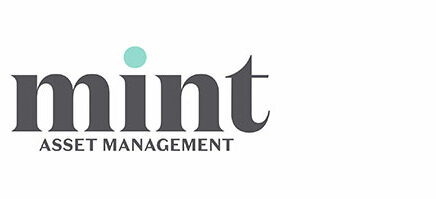
InvestNow News – 30th October – Mint Asset Management – Capital diet: how investors can generate income in a negative rates world
Article written by Mint Asset Management – 31st August 2020
The hunt for yield is on again, with a vengeance. But how much risk will investors take to get it, and do they really understand what chasing high yield means for their hard-earned savings? Mint chief executive, Rebecca Thomas, explains why eating some capital return is a better option for income-hungry Kiwi investors…
Internationally, fund managers with even lower interest rates than here in New Zealand are searching for income by looking at illiquid asset classes and securities, high yield bonds, deeply subordinated debt and other complex synthetic instruments dressed up to deliver ‘income’ despite the lack of any real underlying cash yields. Usually, this involves taking on unquantified risk with the prospect of capital loss.
With government bonds providing zero income, fixed income managers are taking more credit risk to generate a theoretically higher running yield. We know there is no such thing as a ‘free lunch’ and the high payout might be cut, or worse still capital might be eroded.
Finding non-correlated streams of income is possible. Whether these are music royalties or infrastructure projects but these are predominantly unlisted securities and, just like real assets, they are less liquid in normal market conditions than listed sources of income; but in the current Covid-19 environment liquidity has all but dried up.
In New Zealand, we have listed shares that have always paid a decent yield relative to most offshore markets. Moreover, we have an ownership structure of the share market which includes investors who expect consistency of dividend payouts and dividend growth. The corollary of this is that companies with these type of shareholders on their register have a significant incentive to maintain and grow their dividends.
Investments need to deliver a return which beats inflation and maintains the capital value for future income generation. So, some growth assets such as equities are essential in current markets to deliver return expectations even in conservative portfolios.
We believe the equities market both here and overseas is a good place to start for sustainable sources of income rather than relying on bonds. Historically, though, some high-yield shares have also cut their dividends in a crisis: our research focuses on growth or defensive industries where dividends can be maintained or even grow.
Mint’s investment approach is to look for growth at a reasonable price. We want exposure to those industries and sectors that can continue to grow both in spite of, and because of, the current environment. Our preference for these type of companies has served us well over the last 12 months and our portfolios have not suffered meaningful dividend cuts. However, the overall portfolio yield is coming down as these growth assets have outperformed in share price terms – fueled in part by the liquidity being pumped into global markets.
So what should investors do in this low income-generating environment to maintain the return they need to cover expenses? We suggest that one sensible answer could be for investors to treat their equities-based capital growth as a source of income.
Over the long term roughly one-third of shares total return comes from dividends and two-thirds from capital growth. Investors can create their required return by crystallising some of this capital growth each year. This is a far better solution that chasing higher yield in fixed income investments especially when interest rates are very low and negative in many countries.
While some investors baulk at the prospect of spending capital, it is a far better solution than moving up the risk curve to maintain a higher income payout. Furthermore, unlike in many other jurisdictions, New Zealand investors face no tax consequences for tapping into capital gains through portfolio investment entity (PIE) funds compared to relying on dwindling dividend income streams.
As rates head below zero and companies face mounting revenue pressures investors will have to look beyond the traditional sources of regular income for sustenance. Fortunately, markets have cooked up considerable capital gains for investors that can serve the same purpose without the risk of indigestion posed by sugar-coated high-yield junk securities.
Disclaimer: Rebecca Thomas is the Chief Executive Officer at Mint Asset Management Limited. The above article is intended to provide information and does not purport to give investment advice.
Mint Asset Management is the issuer of the Mint Asset Management Funds. Download a copy of the product disclosure statement here.
InvestNow News – 30th October – Mint Asset Management – Capital diet: how investors can generate income in a negative rates world
Article written by Mint Asset Management – 31st August 2020
The hunt for yield is on again, with a vengeance. But how much risk will investors take to get it, and do they really understand what chasing high yield means for their hard-earned savings? Mint chief executive, Rebecca Thomas, explains why eating some capital return is a better option for income-hungry Kiwi investors…
Internationally, fund managers with even lower interest rates than here in New Zealand are searching for income by looking at illiquid asset classes and securities, high yield bonds, deeply subordinated debt and other complex synthetic instruments dressed up to deliver ‘income’ despite the lack of any real underlying cash yields. Usually, this involves taking on unquantified risk with the prospect of capital loss.
With government bonds providing zero income, fixed income managers are taking more credit risk to generate a theoretically higher running yield. We know there is no such thing as a ‘free lunch’ and the high payout might be cut, or worse still capital might be eroded.
Finding non-correlated streams of income is possible. Whether these are music royalties or infrastructure projects but these are predominantly unlisted securities and, just like real assets, they are less liquid in normal market conditions than listed sources of income; but in the current Covid-19 environment liquidity has all but dried up.
In New Zealand, we have listed shares that have always paid a decent yield relative to most offshore markets. Moreover, we have an ownership structure of the share market which includes investors who expect consistency of dividend payouts and dividend growth. The corollary of this is that companies with these type of shareholders on their register have a significant incentive to maintain and grow their dividends.
Investments need to deliver a return which beats inflation and maintains the capital value for future income generation. So, some growth assets such as equities are essential in current markets to deliver return expectations even in conservative portfolios.
We believe the equities market both here and overseas is a good place to start for sustainable sources of income rather than relying on bonds. Historically, though, some high-yield shares have also cut their dividends in a crisis: our research focuses on growth or defensive industries where dividends can be maintained or even grow.
Mint’s investment approach is to look for growth at a reasonable price. We want exposure to those industries and sectors that can continue to grow both in spite of, and because of, the current environment. Our preference for these type of companies has served us well over the last 12 months and our portfolios have not suffered meaningful dividend cuts. However, the overall portfolio yield is coming down as these growth assets have outperformed in share price terms – fueled in part by the liquidity being pumped into global markets.
So what should investors do in this low income-generating environment to maintain the return they need to cover expenses? We suggest that one sensible answer could be for investors to treat their equities-based capital growth as a source of income.
Over the long term roughly one-third of shares total return comes from dividends and two-thirds from capital growth. Investors can create their required return by crystallising some of this capital growth each year. This is a far better solution that chasing higher yield in fixed income investments especially when interest rates are very low and negative in many countries.
While some investors baulk at the prospect of spending capital, it is a far better solution than moving up the risk curve to maintain a higher income payout. Furthermore, unlike in many other jurisdictions, New Zealand investors face no tax consequences for tapping into capital gains through portfolio investment entity (PIE) funds compared to relying on dwindling dividend income streams.
As rates head below zero and companies face mounting revenue pressures investors will have to look beyond the traditional sources of regular income for sustenance. Fortunately, markets have cooked up considerable capital gains for investors that can serve the same purpose without the risk of indigestion posed by sugar-coated high-yield junk securities.
Disclaimer: Rebecca Thomas is the Chief Executive Officer at Mint Asset Management Limited. The above article is intended to provide information and does not purport to give investment advice.
Mint Asset Management is the issuer of the Mint Asset Management Funds. Download a copy of the product disclosure statement here.



